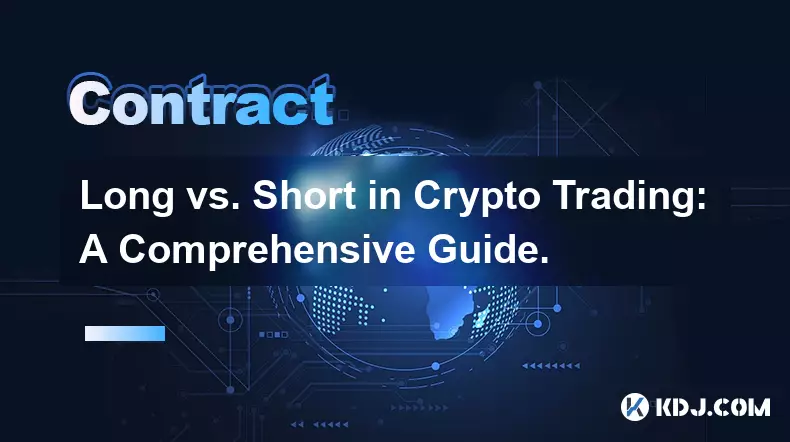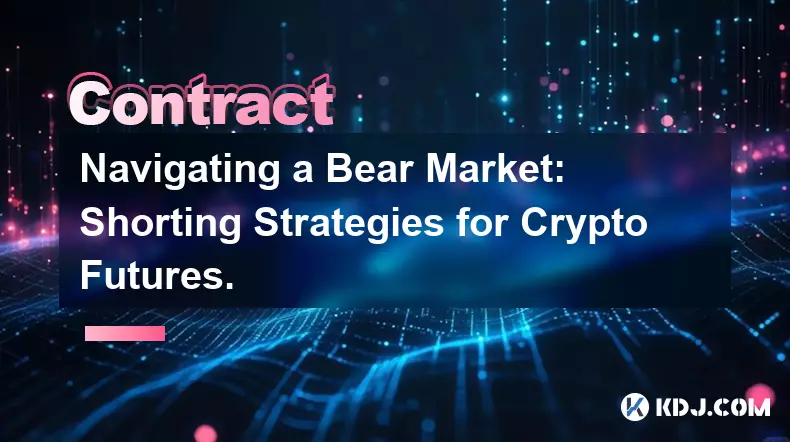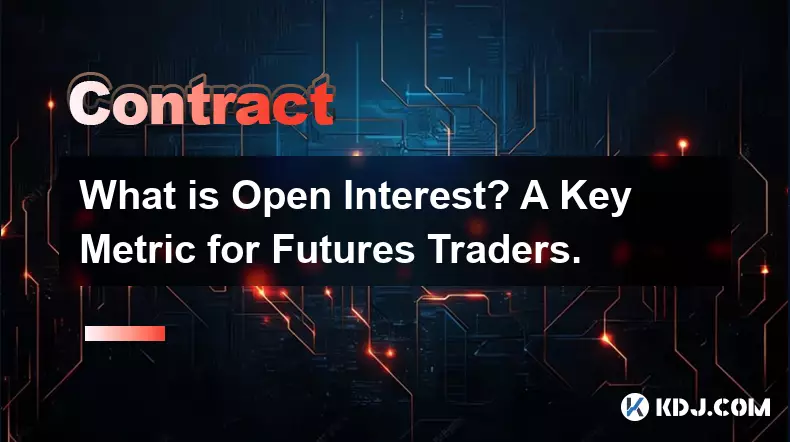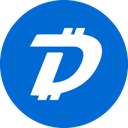-
 bitcoin
bitcoin $107015.826941 USD
-2.18% -
 ethereum
ethereum $3637.352324 USD
-5.18% -
 tether
tether $0.999831 USD
-0.02% -
 xrp
xrp $2.338078 USD
-6.23% -
 bnb
bnb $998.272150 USD
-6.97% -
 solana
solana $167.598257 USD
-10.12% -
 usd-coin
usd-coin $0.999863 USD
0.01% -
 tron
tron $0.282573 USD
-5.09% -
 dogecoin
dogecoin $0.169891 USD
-7.39% -
 cardano
cardano $0.557554 USD
-7.03% -
 hyperliquid
hyperliquid $39.914802 USD
-5.85% -
 chainlink
chainlink $15.414549 USD
-9.97% -
 bitcoin-cash
bitcoin-cash $510.361911 USD
-4.26% -
 ethena-usde
ethena-usde $0.999194 USD
-0.03% -
 stellar
stellar $0.282092 USD
-6.07%
What are quarterly vs. perpetual ADA contracts?
Quarterly and perpetual ADA contracts differ in expiration, funding, and use—quarterlies settle quarterly without funding, while perpetuais never expire but incur ongoing funding fees.
Oct 19, 2025 at 08:55 am

Understanding Quarterly and Perpetual ADA Contracts
Derivatives trading in the cryptocurrency space has expanded rapidly, offering traders various instruments to gain exposure to digital assets like Cardano’s ADA. Among the most popular are quarterly and perpetual futures contracts. These financial tools allow market participants to speculate on price movements or hedge existing positions without owning the underlying asset. While both contract types involve ADA as the base or quote currency, their structure, purpose, and mechanics differ significantly.
Differences Between Quarterly and Perpetual Contracts
1. Contract expiration dates vary fundamentally between the two types.2. Quarterly contracts have a fixed settlement date, typically aligned with calendar quarters—March, June, September, and December.
3. Traders must close, roll over, or settle these positions by the expiry date, which introduces time-based pressure.
4. Perpetual contracts, in contrast, do not expire, allowing traders to hold positions indefinitely.
5. This absence of expiry makes perpetuals more suitable for long-term speculative strategies or hedging without rollover complications.
Financing Mechanisms in Perpetual Contracts
1. Perpetual contracts use a funding rate system to anchor the futures price to the spot market.2. Funding rates are periodic payments exchanged between long and short holders, depending on whether the contract trades above or below the index price.
3. When demand for long positions is high, the futures price tends to exceed the spot price, leading longs to pay shorts via positive funding rates.
4. This mechanism discourages prolonged deviations and maintains alignment between derivative and underlying asset values.
5. Quarterly contracts do not require funding rates because they converge to the spot price at expiration naturally.
Risk and Leverage Considerations
1. Both contract types support leveraged trading, but risk profiles differ due to structural design.2. With quarterly contracts, price convergence at expiry reduces basis risk as the settlement approaches.
3. However, volatility around expiration events can trigger liquidations, especially in low-liquidity environments.
4. Perpetual contracts expose traders to ongoing funding costs or receipts, which can accumulate over time and impact profitability.
5. High leverage combined with adverse price moves and negative funding can accelerate margin depletion in perpetuals.
Frequently Asked Questions
How are quarterly ADA futures settled?Quarterly ADA futures are typically settled in cash using a reference index price derived from major spot exchanges. The final settlement value is calculated as an average over a predetermined window before expiration, minimizing manipulation risks.
Can retail traders access both contract types?Yes, most major crypto derivatives exchanges such as Binance, Bybit, and OKX offer both quarterly and perpetual ADA contracts to retail users. Access depends on regional regulations and account verification levels.
What happens if I hold a quarterly contract past its expiry?Positions not closed before expiry are automatically settled by the exchange. The profit or loss is credited or debited in the settlement currency, usually USDT or USD, based on the final mark price.
Why might a trader prefer a quarterly contract over a perpetual?Traders seeking defined time horizons, arbitrage opportunities, or reduced exposure to funding volatility may favor quarterly contracts. They are also preferred in institutional-grade hedging strategies where predictability is critical.
Disclaimer:info@kdj.com
The information provided is not trading advice. kdj.com does not assume any responsibility for any investments made based on the information provided in this article. Cryptocurrencies are highly volatile and it is highly recommended that you invest with caution after thorough research!
If you believe that the content used on this website infringes your copyright, please contact us immediately (info@kdj.com) and we will delete it promptly.
- Backend-for-Frontend, Token Theft, and Security: Navigating the Treacherous Waters of Modern Web Apps
- 2025-11-05 05:10:01
- Crypto Carnage: Bitcoin's $200B Wipeout – What's Next?
- 2025-11-05 04:30:16
- Sequans, Bitcoin, and Debt Reduction: A NYC Perspective on a Bold Move
- 2025-11-05 03:50:12
- XRP Price Wobbles: Death Cross Looms as Ripple Token Navigates Choppy Waters
- 2025-11-05 04:10:01
- Altcoins, Perpetual Tokens, and ETH Price: Navigating the Crypto Current
- 2025-11-05 03:55:01
- Tether's Triumph: $10 Billion Profits and a Treasury Milestone
- 2025-11-05 03:55:12
Related knowledge

Long vs. Short in Crypto Trading: A Comprehensive Guide.
Nov 04,2025 at 07:39pm
Understanding Long and Short Positions in Cryptocurrency Markets1. In crypto trading, taking a long position means buying a cryptocurrency with the ex...

The 2025 Guide to Profitable Crypto Futures and Derivatives Trading.
Nov 01,2025 at 07:39pm
Understanding Crypto Futures and Derivatives in 20251. Crypto futures are financial contracts obligating the buyer to purchase, or the seller to sell,...

Navigating a Bear Market: Shorting Strategies for Crypto Futures.
Nov 03,2025 at 07:18pm
Understanding Bear Market Dynamics in Crypto1. A bear market in the cryptocurrency space is characterized by prolonged price declines, often driven by...

What is Open Interest? A Key Metric for Futures Traders.
Nov 03,2025 at 11:18pm
Understanding Open Interest in Cryptocurrency Futures1. Open interest refers to the total number of active futures contracts that have not been settle...

How to Trade Crypto Futures on Bybit: A Complete Walkthrough.
Nov 04,2025 at 10:50pm
Setting Up Your Bybit Account for Futures Trading1. Visit the official Bybit website and click on the 'Sign Up' button to create a new account. Provid...

Identifying Support and Resistance Levels for Crypto Contract Trading.
Nov 04,2025 at 06:15pm
Understanding Support and Resistance in Crypto Markets1. Support and resistance levels are foundational concepts in technical analysis, especially wit...

Long vs. Short in Crypto Trading: A Comprehensive Guide.
Nov 04,2025 at 07:39pm
Understanding Long and Short Positions in Cryptocurrency Markets1. In crypto trading, taking a long position means buying a cryptocurrency with the ex...

The 2025 Guide to Profitable Crypto Futures and Derivatives Trading.
Nov 01,2025 at 07:39pm
Understanding Crypto Futures and Derivatives in 20251. Crypto futures are financial contracts obligating the buyer to purchase, or the seller to sell,...

Navigating a Bear Market: Shorting Strategies for Crypto Futures.
Nov 03,2025 at 07:18pm
Understanding Bear Market Dynamics in Crypto1. A bear market in the cryptocurrency space is characterized by prolonged price declines, often driven by...

What is Open Interest? A Key Metric for Futures Traders.
Nov 03,2025 at 11:18pm
Understanding Open Interest in Cryptocurrency Futures1. Open interest refers to the total number of active futures contracts that have not been settle...

How to Trade Crypto Futures on Bybit: A Complete Walkthrough.
Nov 04,2025 at 10:50pm
Setting Up Your Bybit Account for Futures Trading1. Visit the official Bybit website and click on the 'Sign Up' button to create a new account. Provid...

Identifying Support and Resistance Levels for Crypto Contract Trading.
Nov 04,2025 at 06:15pm
Understanding Support and Resistance in Crypto Markets1. Support and resistance levels are foundational concepts in technical analysis, especially wit...
See all articles










































































